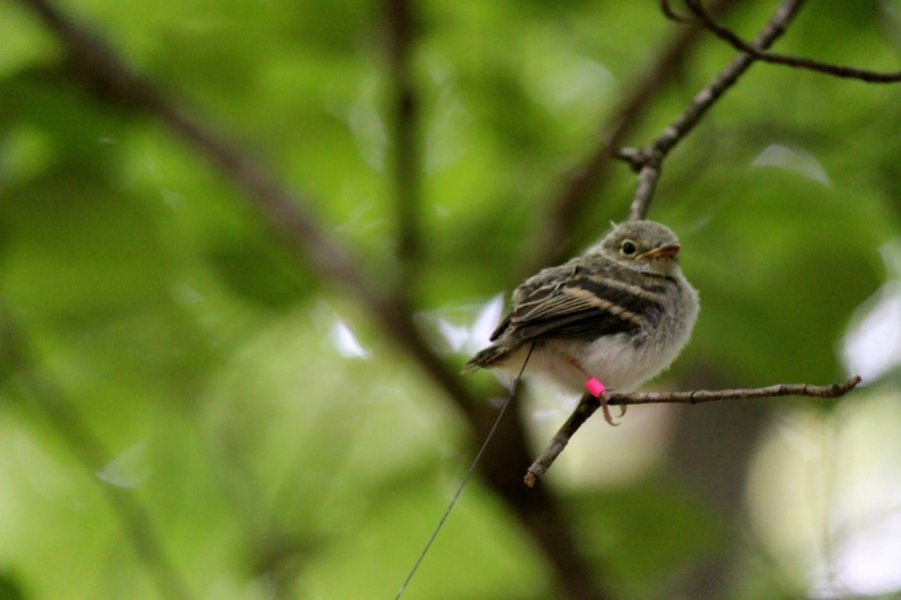Baby songbirds in the nest face naturally tough odds. Unable to fly, they are easy prey for cats, snakes, and even other birds. But the perils don’t end when the young birds venture out from the nest. Now, new research shows that the risks baby migratory songbirds face in the nest are not necessarily the same out of the nest. The findings may have important implications for migratory songbird conservation.
“For a lot of migratory songbird species, the current conservation goal for the breeding grounds is to produce more nestlings,” said Julie Jenkins, an avian ecologist who led the study. “This strategy assumes that factors that are important for nest success are the same for juvenile post-fledging success.”
Post-fledging refers to the period of time directly after young birds leave the nest and before they migrate. Initially, the new fledglings are learning the skills they need to survive on their own, often with help from parents nearby. According to Jenkins, it is during this time that the new fledglings are most vulnerable to predation.
“You can think of young fledglings as teenagers getting ready to leave the house. They still depend on their parents for a lot of things and may have pretty poor judgment. The majority of mortalities occur during the first week or so,” she said.
While scientists know it’s a dangerous time for baby birds, they don’t know what may be affecting mortality post-fledging or if risks post-fledging are similarly affected by habitat as compared to the nesting period.
“We have very little information about the post-fledging period. This work is labor intensive and it’s only recently that radio transmitters have been miniaturized to the extent where we can put them on small songbirds,” she said.
Which is exactly what the researchers did?
Jenkins and her colleagues documented nesting survival and fitted baby Ovenbirds (Seiurus aurocapilla) and Acadian Flycatchers (Empidonax virescens) with lightweight, temporary radio transmitters and followed them daily for about four weeks using handheld receivers and directional antennas. The researchers recorded the young birds’ behaviors and survival as well as characteristics of the habitat where they were found. They carried out the research in three fragmented forests over three breeding seasons.
They found that around 90 percent of juvenile Acadian flycatchers and about 50 percent of Ovenbirds survived these first few weeks out of the nest, with the majority of deaths due to predation.
“Ovenbirds and Acadian flycatchers had similar nesting success but experienced very different mortality rates post-fledging, said Jenkins.”The results tell us that we cannot assume that species occupying similar nesting habitat will have similar risks after fledging. For songbirds, in general, these findings tell us that we should be considering species individually.”
The study is also important because it sheds new light on factors that impact the survival of these songbirds during a critical period in their lives. The more we know about each stage in the annual year of migrating songbirds, said Jenkins, the better equipped we will be to provide them suitable habitat.
Source: Science daily
N.H.Kh

